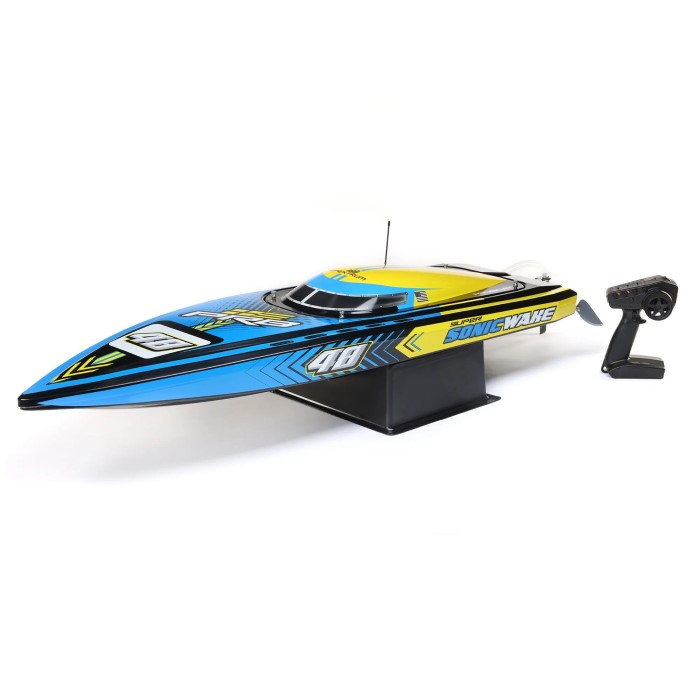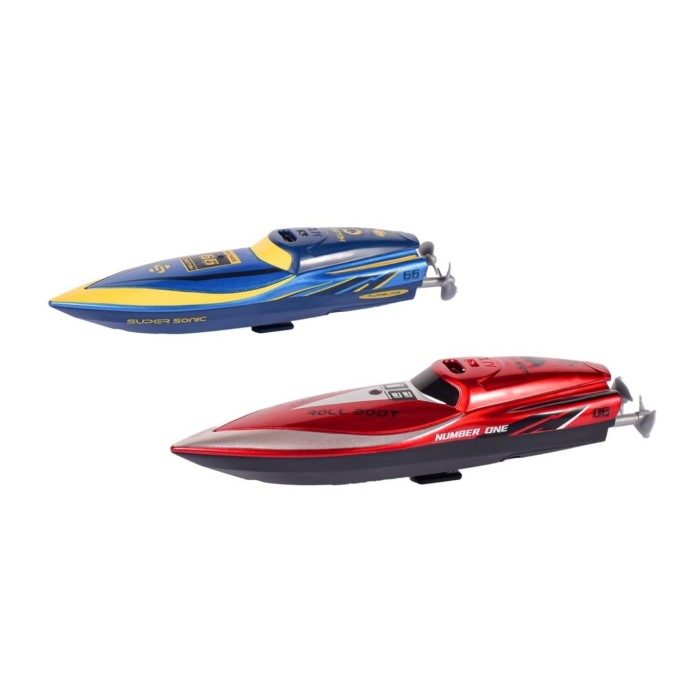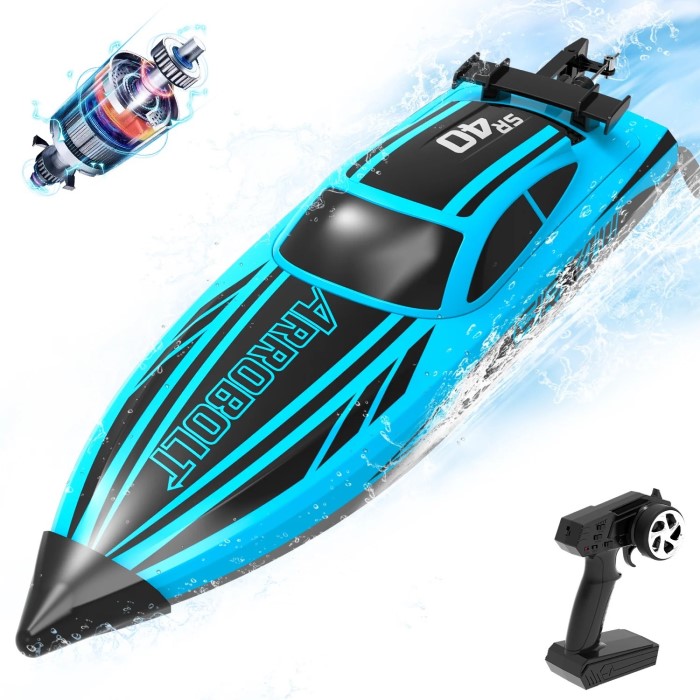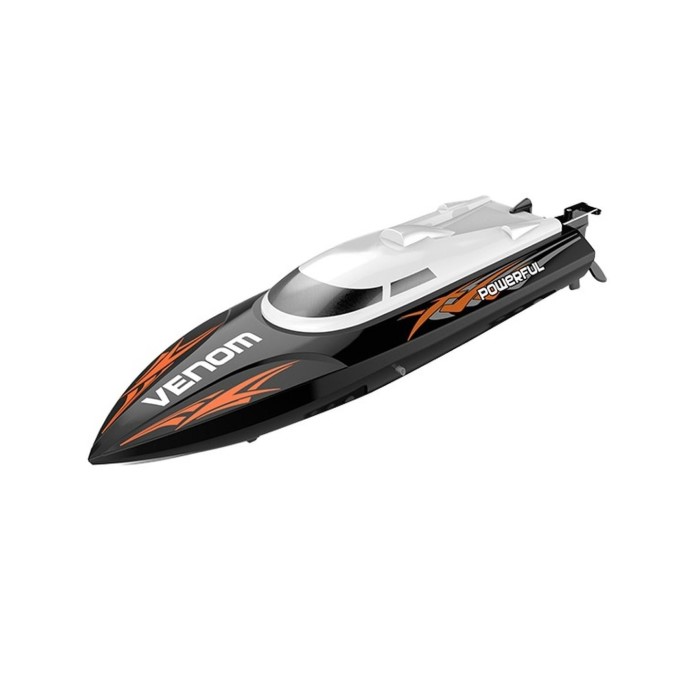Introduction
Remote control (RC) speed boats have gained popularity among hobbyists and thrill-seekers alike. These miniature vessels allow enthusiasts to experience the adrenaline rush of speed on water, all while being operated from the shore. However, the excitement of racing over waves quickly diminishes if safety precautions are overlooked. Understanding RC speed boat safety tips for beginners is essential, as it not only enhances the enjoyment of this hobby but also ensures a secure environment for everyone involved.

RC speed boating, much like any adventure sport, requires knowledge and preparation. When you venture out onto the water with your RC speed boat, you should be equipped not just with navigation skills but also with a comprehensive understanding of safe operational practices. This article will delve into the details of how to safely operate an RC speed boat, explore the best safety practices for RC speed boating, and provide essential tips to prevent accidents while racing.
The Exciting World
Being in control of a high-speed RC boat can provide a thrilling experience that rivals other water-based activities. You can navigate around turns, perform stunts, and even race against friends. However, these exhilarating experiences come with inherent risks. The fast speeds can make boats difficult to control, and without proper caution, accidents can happen. Before taking to the waters, understanding the mechanics of your boat, the environment, and the rules of engagement is critical.
For instance, different models of RC speed boats come equipped with various features. Beginners may start with less powerful models that have stability support, while seasoned racers might opt for high-performance variants capable of incredible speeds. Regardless of your boat’s specifications, the importance of safety cannot be ignored.
Getting acquainted with the basic operational features helps to build confidence while ensuring a safer experience on the water. Additionally, knowing the limitations and capabilities of your vehicle can greatly reduce the likelihood of accidents.
Choosing the Right Location for Boating
One of the most crucial aspects of RC speed boating is selecting an appropriate location. Not every body of water is suitable for racing. Here are some points to consider when choosing a location for your RC speed boat:
- Explore Designated Areas: Many lakes and ponds have designated areas for RC boating enthusiasts. These locations are often monitored, which helps in reducing accidents involving other boats or swimmers.
- Assessing Water Conditions: The calmness of the water is vital. Calm, flat water allows for better control and reduces the chances of capsizing or crashing. Avoid locations with strong currents or waves, as this can complicate your handling abilities.
- Identifying Nearby Hazards: Familiarize yourself with any submerged or surface obstacles like rocks, sticks, or debris. These hazards can damage your boat or cause accidents during a race.
- Consider Boat Traffic: Choose times when there are fewer boats on the water. Racing near larger vessels or during busy periods increases the chance of collisions.
In short, selecting the right venue dovetails directly with your safety plan, enabling a more relaxed and enjoyable RC boating experience.
Essential Safety Gear for Operators
Before heading out with your RC speed boat, it’s crucial to equip yourself with the right safety gear. Though you might not be physically in the water, preparedness is essential. Here’s a list of key items:
- Life Jackets: If you are racing close to the shore or sharing the waters with others, having a life jacket on hand is a responsible choice. It ensures compliance with safety regulations and fosters a culture of safety.
- Alarm System: Some advanced RC boats come equipped with alarms that notify operators when the battery is low or when the boat is out of range. These alarms can help you take timely action, avoiding accidents caused by a boat losing power unexpectedly.
- Communications Device: If you are with a group, making use of walkie-talkies can help maintain communication. This is especially useful to signal changes in direction or alert others about potential hazards.
- Visibility Gear: Bright clothing and visible markers on your RC boat improve safety. Using flags or bright colors ensures that your boat stands out, particularly in crowded locations.
Making safety gear a priority prepares you for unpredictable situations. This proactive approach ensures that you’re not only protected but also able to assist others in case of an emergency.
Proper navigation techniques can prevent many accidents that occur while operating an RC speed boat. Here are some useful tips:
- Know Your Boat’s Capabilities: Before you race, take some time to familiarize yourself with your boat’s steering, acceleration, and braking functions. Knowing how it handles will allow you to make better real-time decisions.
- Start Slow: Especially for beginners, starting at a slower pace allows you to get a feel for the water and the boat’s responsiveness. As your confidence grows, you can gradually increase your speed.
- Use a Spotter: Having someone with you to watch the boat while you focus on steering can be advantageous. They can alert you to potential obstacles or issues, helping in making immediate adjustments.
- Practice Maneuvering: Spend time practicing turns, stops, and acceleration in a controlled environment before racing. Mastering these basic skills improves overall control and reduces the risk of accidents.
- Monitor Surroundings: Always be aware of the environment around you. Look out for swimmers, other boats, and any obstacles in the water. Understanding your surroundings aids in creating a safe boating experience.
Implementing these navigation tips enhances your ability to maneuver efficiently and safely on the water. They not only improve your skills but also contribute to a more enjoyable racing experience.
Best Practices
When it comes to racing, applying best practices can enhance both safety and enjoyment. Here are some essential guidelines:
- Establish Racing Boundaries: If racing with friends, set clear boundaries regarding where each racer can operate. This avoids reckless maneuvers that could lead to collisions and promotes fair racing.
- Use Hand Signals: Develop a set of hand signals to communicate your intentions. This can help participants know when to slow down, speed up, or change direction.
- Always Have a Safety Observer: Even when racing with experienced users, having someone dedicated to observing the race will improve safety. They can call out warnings or notify racers of potential hazards.
- Regulations Awareness: Ensure everyone involved in the race is aware of the local regulations governing RC boating. Compliance with these regulations helps maintain a safe environment for all participants.
- Stay Relaxed: Nervousness or anxiety can lead to poor decision-making. Staying calm and focused during a race enhances your reaction times, contributing to a much safer experience.
By adhering to these best practices, not only do you ensure a competitive spirit during races, but you also create a safer environment for all participants.
Preventing Accidents
Accidents can still happen, even with the best planning and awareness. However, you can take several actions to prevent them:
- Post-Race Inspection: After each racing session, inspect your RC speed boat for any signs of wear and tear. Checking components such as the propeller, hull integrity, and electrical connections can prevent issues during future use.
- Battery Management: Utilizing high-quality batteries and ensuring they are charged properly is essential. Always have spare batteries on hand to avoid being stranded on the water due to power loss.
- Emergency Procedures: Call out an emergency procedure for your group. Define a plan for what to do if a boat capsizes or if a person needs assistance. Familiarity with emergency actions ensures everyone knows how to respond in a crisis.
- Practice Regularly: The more comfortable you are with your RC boat and its intricacies, the less likely you are to make mistakes. Frequent practice helps to solidify your skills, reducing the likelihood of accidents.
- Utilize Safe Docks: When finished with your session, guide your boat back to a designated area for ending operations. Ensure that you retrieve your boat carefully to avoid accidental injuries.
These preventive measures will markedly reduce the chances of accidents happening while improving your overall experience in RC speed boating.
Conclusion: Enjoying RC Speed Boating Responsibly
In conclusion, the enjoyment of your RC speed boat experience is rooted in understanding and adhering to essential safety protocols. By learning RC speed boat safety tips for beginners and implementing proper operational practices, you can embark on a journey filled with fun and excitement. Incorporating knowledge of how to safely operate an RC speed boat and following the best safety practices for RC speed boating will allow you to enjoy every moment without fear of accidents.
By embracing responsibility while enjoying the thrill of speed, you open the door to creating amazing memories shared with fellow RC enthusiasts. As you explore the exciting world of RC speed boating, remember that safety should always be your top priority. This way, your adventures on the water will be marked with joy, camaraderie, and a sincere appreciation for this exhilarating hobby.








